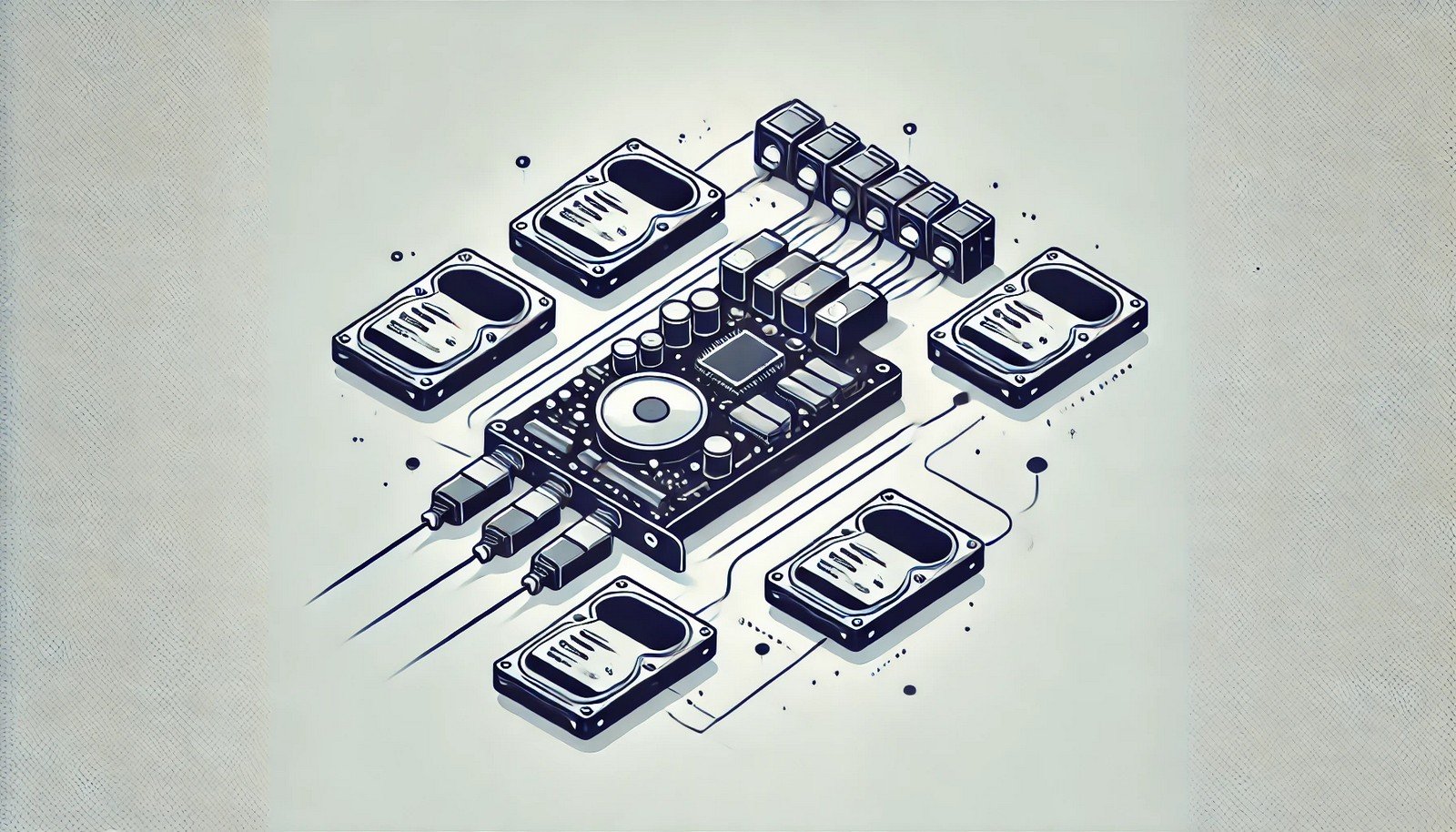RAID Controller
 (Representational Image | Source: Dall-E)
(Representational Image | Source: Dall-E)
Quick Navigation:
- RAID Controller Definition
- RAID Controller Explained Easy
- RAID Controller Origin
- RAID Controller Etymology
- RAID Controller Usage Trends
- RAID Controller Usage
- RAID Controller Examples in Context
- RAID Controller FAQ
- RAID Controller Related Words
RAID Controller Definition
A RAID (Redundant Array of Independent Disks) controller is a hardware or software component that manages multiple storage drives to improve performance, redundancy, or both. It enables RAID configurations such as RAID 0 (striping), RAID 1 (mirroring), RAID 5 (striping with parity), and more. Hardware RAID controllers are physical cards inserted into a system, while software RAID is implemented via the operating system. RAID controllers ensure data reliability, enhance read/write speeds, and prevent data loss in case of drive failures.
RAID Controller Explained Easy
Imagine you have a library with many books. Instead of keeping all books in one place, you make copies and store them in different rooms. If one room gets messy, you can still find the books in the other rooms. A RAID controller does something similar for computer storage. It organizes and protects your data by spreading it across multiple hard drives so that even if one drive fails, your information stays safe.
RAID Controller Origin
RAID technology was first conceptualized in 1987 by researchers at the University of California, Berkeley. They introduced the idea of combining multiple inexpensive disk drives to act as a single, more reliable storage system. Since then, RAID controllers have evolved significantly, with hardware-based controllers becoming standard in enterprise servers and data centers.
RAID Controller Etymology
The term “RAID” originated as an acronym for "Redundant Array of Inexpensive Disks." Over time, the term was modified to "Redundant Array of Independent Disks" to better reflect the technology's use in enterprise environments.
RAID Controller Usage Trends
RAID controllers are widely used in enterprise data centers, cloud computing, and high-performance computing environments. With the rise of SSDs (Solid State Drives), modern RAID controllers have adapted to support hybrid storage configurations, allowing a mix of HDDs and SSDs for optimized performance. Although software-based RAID solutions have gained popularity, hardware RAID controllers remain a preferred choice for mission-critical applications requiring maximum reliability.
RAID Controller Usage
- Formal/Technical Tagging:
- Data Storage
- Redundancy Management
- Enterprise IT - Typical Collocations:
- "RAID controller card"
- "hardware RAID solution"
- "RAID 5 controller"
- "RAID array setup"
RAID Controller Examples in Context
- A RAID controller in a web server ensures that critical website data remains accessible even if a hard drive fails.
- Businesses use RAID controllers in NAS (Network Attached Storage) devices to maintain high data availability.
- Gamers and content creators utilize RAID controllers to boost storage speed and safeguard their work.
RAID Controller FAQ
- What does a RAID controller do?
A RAID controller manages multiple hard drives in a RAID configuration, improving speed, redundancy, or both. - Is a hardware RAID controller better than software RAID?
Hardware RAID is generally more reliable and efficient, but software RAID offers flexibility and cost savings. - Which RAID levels require a RAID controller?
While software RAID supports many configurations, hardware controllers are often needed for RAID 5, 6, and 10. - Can I use a RAID controller with SSDs?
Yes, RAID controllers support both HDDs and SSDs, with some optimized for hybrid storage. - Do RAID controllers work with all operating systems?
Most hardware RAID controllers provide drivers for major OS platforms, including Windows, Linux, and macOS. - What happens if a RAID controller fails?
If a hardware RAID controller fails, replacing it with the same model is typically required to restore the RAID array. - Can a RAID controller prevent data loss?
While RAID enhances redundancy, it is not a substitute for backups. Critical data should always have additional backups. - Are RAID controllers necessary for home users?
Home users who need data redundancy or enhanced speed, such as media creators, can benefit from RAID controllers. - How do I configure a RAID controller?
RAID controllers come with a BIOS/UEFI interface where you can select RAID levels and configure settings. - Can I mix different drive sizes in a RAID setup?
It’s possible, but the RAID array typically operates at the capacity of the smallest drive.
RAID Controller Related Words
- Categories/Topics:
- Data Storage Technologies
- Enterprise IT Solutions
- High-Performance Computing
Did you know?
The earliest RAID controllers were designed to work with spinning hard disks, but modern RAID controllers can manage all-flash storage arrays, significantly improving data transfer speeds and reliability. Some enterprise-grade RAID controllers even feature built-in batteries or flash memory to prevent data corruption during power failures.
PicDictionary.com is an online dictionary in pictures. If you have questions or suggestions, please reach out to us on WhatsApp or Twitter.Authors | Arjun Vishnu | @ArjunAndVishnu

I am Vishnu. I like AI, Linux, Single Board Computers, and Cloud Computing. I create the web & video content, and I also write for popular websites.
My younger brother, Arjun handles image & video editing. Together, we run a YouTube Channel that's focused on reviewing gadgets and explaining technology.



Comments powered by CComment